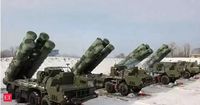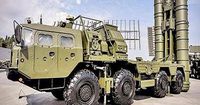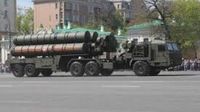Tensions between India and Pakistan escalated significantly on the night of May 7-8, 2025, as both nations exchanged aerial strikes amid rising hostilities. According to defence officials, Pakistan launched drones and missiles targeting multiple locations across Northern and Western India, including Awantipora, Srinagar, Jammu, Pathankot, Amritsar, Kapurthala, Jalandhar, Ludhiana, Adampur, Bhatinda, Chandigarh, Nal, Phalodi, Uttarlai, and Bhuj. In response, the Indian Air Force (IAF) deployed its advanced S-400 air defence missile systems, known as "Sudarshan Chakra," to intercept and neutralise the incoming threats.
The S-400 system, developed by Russia, has been a pivotal asset for India since its acquisition. Capable of tracking targets up to 600 kilometres away and intercepting them at distances of up to 400 kilometres, the S-400 has transformed India's aerial defence capabilities. Currently, India operates four squadrons of the S-400, with one squadron covering Jammu and Kashmir and Punjab from Pathankot, while another protects key areas in Rajasthan and Gujarat.
On the intervening night of the attacks, the IAF successfully neutralised the Pakistani drones and missiles, preventing any damage to Indian assets. Reports indicate that debris from the intercepted projectiles was recovered at several locations, serving as tangible evidence of Pakistan's aggressive maneuvers. The defence ministry confirmed that the operation was executed effectively, showcasing the S-400's capabilities in real-time combat scenarios.
Following the aerial assaults, India countered by targeting Pakistani air defence systems, specifically striking an installation near Lahore. This retaliatory action was described by officials as being "in the same domain and with the same intensity," reflecting India's commitment to maintaining a proportional response. The Indian government had previously stated that military establishments in Pakistan would not be targeted unless provoked, emphasizing a strategy of non-escalation while responding decisively to aggression.
The recent escalation follows India's Operation Sindoor, which involved precision strikes on nine terrorist sites in Pakistan and Pakistan-occupied Kashmir (POK) on May 7. The operation was framed as a "focused, measured, and non-escalatory" response to a Pahalgam terror attack that resulted in the deaths of 26 civilians. This context has heightened the stakes in the ongoing conflict, with both nations on high alert.
Experts note that the S-400 Sudarshan Chakra represents a significant advancement in India's air defence strategy. Each S-400 squadron consists of two batteries, each equipped with six launchers, a command-and-control system, and advanced radar technology. This setup allows the S-400 to engage aerial threats at various ranges: short-range (up to 40 km), medium-range (up to 120 km), long-range (up to 250 km), and very long-range (up to 400 km). The system's ability to track over 160 targets simultaneously and engage 72 of them concurrently enhances its effectiveness against coordinated aerial attacks.
Moreover, the S-400's integration into India's air defence framework has been hailed as a game-changer in South Asia's military landscape. The system's advanced capabilities allow it to operate in contested environments, making it resilient against electronic warfare and countermeasures. During previous exercises, the S-400 demonstrated its prowess by successfully neutralising up to 80% of a simulated enemy aircraft package.
As tensions continue to simmer, the strategic significance of the S-400 cannot be overstated. It not only provides a robust deterrent against conventional threats but also enhances India's preparedness against asymmetric warfare strategies employed by adversaries. Reports suggest that Pakistan, wary of the S-400's capabilities, has relocated its F-16 fleet to more distant bases to evade detection and engagement.
In the wake of these developments, the Indian Ministry of Defence reiterated its commitment to non-escalation, provided that similar restraint is observed by Pakistan. The situation remains fluid, with both sides maintaining heightened military readiness. As the world watches closely, the implications of these aerial confrontations extend beyond regional security, impacting global geopolitical dynamics.
The recent aerial exchanges underscore the critical role of advanced military technology in modern warfare, with the S-400 Sudarshan Chakra standing at the forefront of India's defence strategy. As both nations navigate this precarious landscape, the potential for further escalation remains a pressing concern for regional and global stability.



